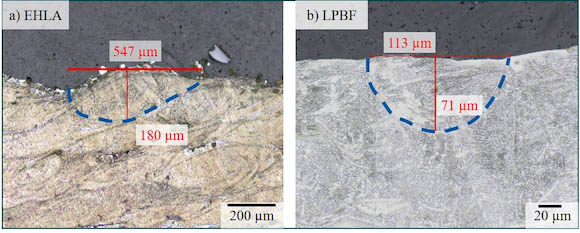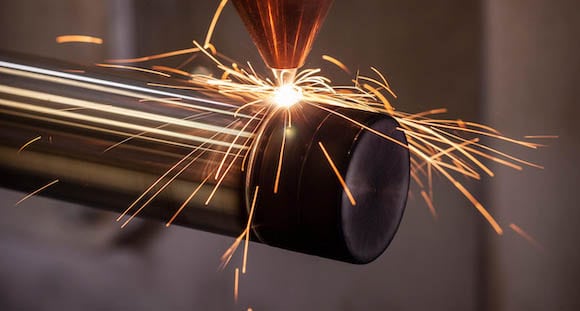Researchers from RWTH Aachen University’s RWTH Aachen Chair for Digital Additive Production (DAP) studied the viability of employing Extreme High-Speed Laser Material Deposition Process (EHLA) for effectively screening and developing novel alloys for Laser Beam Powder Bed Fusion (PBF-LB).
The results showed potential transferability across the processes manufacturing outputs by comparing process variables such as laser intensity and the resulting microstructures.
More from the Study
EHLA and PBF-LB procedures differ primarily in powder supply systems and locations of laser energy input. The powder is deposited worldwide in one layer in Laser Beam Powder Bed Fusion, and the laser point is concentrated on this surface. The powder is delivered locally through a nozzle in the Extreme High-Speed Laser Material Deposition Process, and the powder focus is slightly above the deposition surface (approx. 1 mm); this allows various alloys to be carried and independently mixed in-situ before deposition.
Despite being the most widely used Additive Manufacturing method, researchers were concerned that the promise of PBF-LB was not being fully realized because to the time- and material-intensive alloy creation process. Aachen researchers discovered and analyzed the important EHLA and PBF-LB process factors that impact cooling rates and subsequent microstructures in order to accelerate this process. They next applied their findings to X30Mn22, a high-manganese steel. The microstructures of either sample were compared as the final stage in this procedure to assess process transferability.
Comparisons
Because the intensity of the energy input into the powder material has a significant influence on the cooling rate, the interaction time between the powder and laser beam, as well as the energy input into the material (i.e., laser intensity at laser spot), are calculated and compared for both processes.
Taking laser power and laser spot diameter (spot) into consideration, it was discovered that the intensity in PBF-LB is about fourteen times more than in EHLA; nevertheless, the interaction period between material and laser beam in PBF-LB and EHLA differs by a factor of ten. As a result, it is expected that the effects of the various laser intensities are successfully balanced off, resulting in a comparable energy input per particle.
The researchers also investigated the effect of EHLA process speed on cooling rate. To do this, the dendritic arm spacings (DAS) produced by each method were measured and compared. The DAS is lowered from 1.29 m to 0.58 m by raising the EHLA process speed from 50 to 150 m/min, suggesting that the cooling rate in EHLA is primarily reliant on the process speed.

A shows an EHLA melt pool in light microscope micrograph at a magnification of 100x; B shows a PBF-LB melt pool in LOM micrograph at 500x (Courtesy RWTH DAP)
Promising initial results
The researchers discovered that the microstructure of the manufactured samples is dendritic in both methods, and that the resultant dendrite arm spacings (DAS) are comparable and may be aligned further by adjusting process parameters such as process speed in EHLA. As a consequence, it may be inferred that the resultant microstructures and mechanical characteristics for EHLA and PBF-LB are equivalent.
Further research will be conducted to compare the chemical contents of the produced samples acquired through the two procedures. EHLA process factors such as particle velocity and powder mass flow will also be investigated in terms of their impact on the chemical characteristics of the resultant samples. Furthermore, the evaporation behavior of several alloys will be explored and compared owing to differences in energy input.
In summary, the researchers concluded that, in terms of microstructural characteristics, EHLA is suitable as an advanced alloy screening and development technique for PBF-LB.
Subscribe to AM Chronicle Newsletter to stay connected: https://bit.ly/3fBZ1mP
Follow us on LinkedIn: https://bit.ly/3IjhrFq
Visit for more interesting content on additive manufacturing: https://amchronicle.com/



